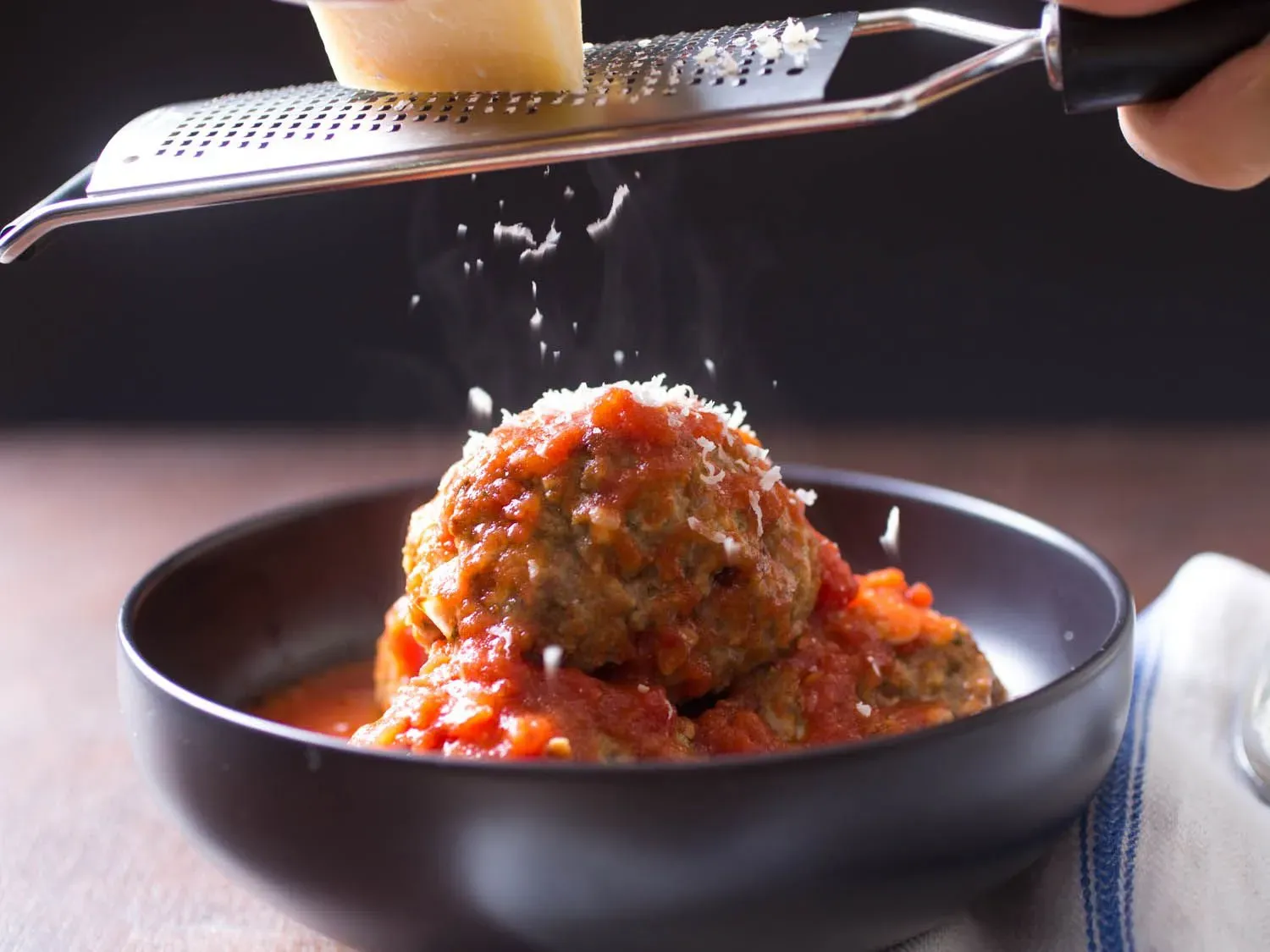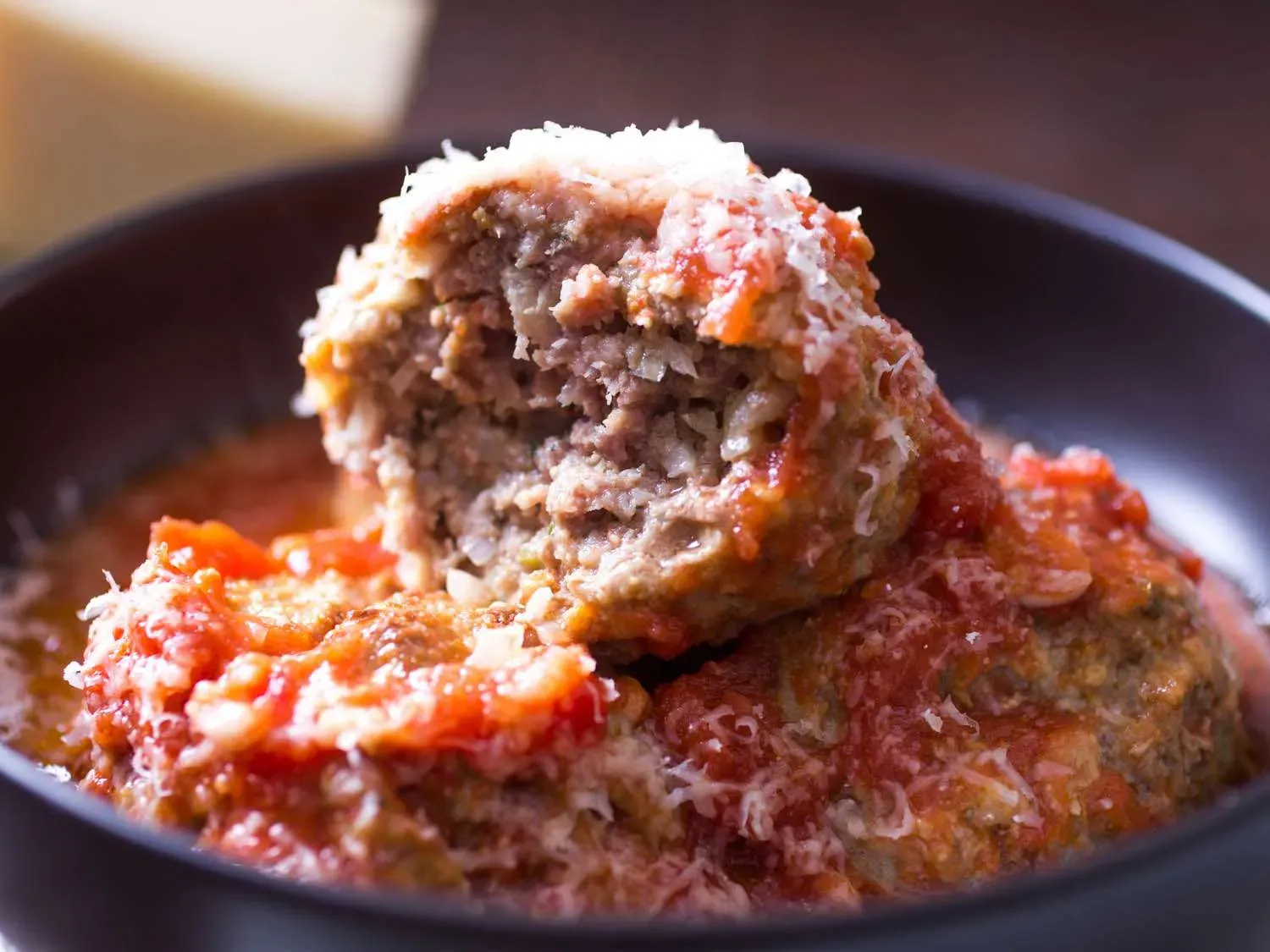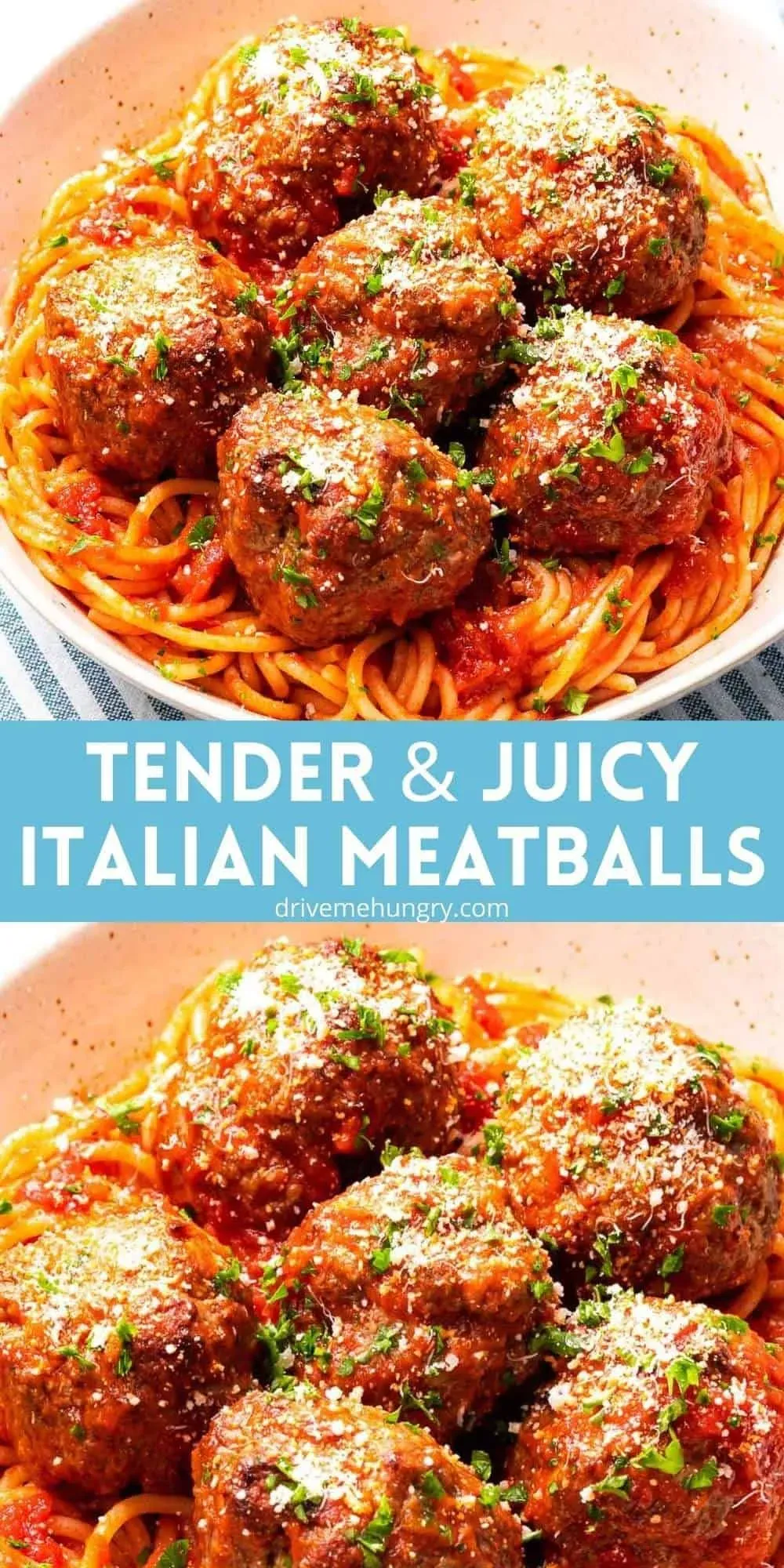Table of Contents
Let's be honest. We've all had those meatballs. The kind that are dry, dense, and taste like sad little hockey pucks simmered in sauce. It’s a culinary crime, really, because a truly great meatball is something special – light, ridiculously tender, and bursting with savory flavor. It should practically melt in your mouth, not require a steak knife.
What Makes a Seriously Great Italian Meatball?

What Makes a Seriously Great Italian Meatball?
Alright, let's talk about the holy grail: the truly great Italian meatball. Forget those dense, rubbery spheres you sometimes encounter. A seriously great meatball, the kind you'd find in a killer `italian meatball recipe serious eats` style guide, is something entirely different. It's light, almost airy, yet substantial. It’s so tender it practically falls apart with just a gentle nudge from your fork, and crucially, it's incredibly juicy, not dry and crumbly. The texture is key – you want it tender through and through, not like biting into a tightly packed ball of ground beef.
Choosing the Right Meat for Your Italian Meatball Recipe Serious Eats Style

Choosing the Right Meat for Your Italian Meatball Recipe Serious Eats Style
Getting the Base Right: Why Beef and Pork is Your Best Bet
Alright, let's talk about the foundation of any good meatball: the meat. You can have all the fancy techniques in the world, but if you start with the wrong stuff, you're already fighting an uphill battle. For a killer `italian meatball recipe serious eats` style, you need a blend that brings flavor and, crucially, fat. That's where the classic 1:1 ratio of beef to pork comes in. We're talking ground chuck or something similar for the beef – you want about 20% fat here for flavor and moisture. For the pork, standard ground pork works perfectly.
Why this combo? Beef brings that deep, savory flavor we associate with meatballs. Pork, on the other hand, adds tenderness and a good amount of fat, which is essential for juicy results. Fat renders as the meatballs cook, keeping them moist from the inside out. Trying to go lean here is a rookie mistake that leads straight to those dry, sad excuses for meatballs.
Why You Should Skip the Veal and What Fat Does
Now, some old-school recipes might call for veal. Let's put that to bed right now for this style. While veal is tender, it's also lean and, frankly, doesn't bring a whole lot of flavor to the party compared to beef and pork. Sticking to a simple 1:1 beef and pork mix gives you the best balance of taste, texture, and fat content needed for that seriously juicy outcome. The fat isn't just for flavor; it physically prevents the protein fibers from seizing up too tightly as they cook, which is what makes meatballs tough.
Think of it this way: fat is the lubricant in your meatball machine. Without enough of it, things get dry and stiff. Using meat with adequate fat content is step one in avoiding the dreaded meatball brick. Don't fear the fat; embrace it for the sake of tenderness and flavor.
- Beef (Ground Chuck, ~20% fat): Provides classic savory depth.
- Pork (Ground Pork): Adds essential fat for juiciness and tenderness.
- Avoid: Lean meats like ground turkey or chicken (unless you add significant fat back), or veal (lacks flavor compared to beef/pork).
The Magic of the Panade for Tender, Juicy Meatballs

The Magic of the Panade for Tender, Juicy Meatballs
so you've got your perfect meat blend sorted. Now, let's talk about the real secret weapon for achieving that melt-in-your-mouth texture in an `italian meatball recipe serious eats` style: the panade. What is this mysterious thing? Simply put, it's a mixture, typically bread (fresh is best, not dried breadcrumbs) soaked in some liquid. Think milk, buttermilk, or even broth. This soaked bread is then mixed into the meat. It might seem counterintuitive – adding bread to meat? – but trust me, this step is non-negotiable if you want truly tender and juicy results. The starch in the bread absorbs the liquid, and when mixed into the meat, it creates little pockets of moisture that keep the meatballs from drying out as they cook. It also helps bind everything together gently without making the mixture dense, acting like a cushion between the protein fibers.
Why bother with a panade?
- Adds crucial moisture: Prevents the meatballs from becoming dry and crumbly.
- Creates tenderness: The soaked bread interrupts the protein structure, resulting in a softer texture.
- Acts as a binder: Holds the mixture together without requiring excessive mixing.
- Boosts flavor absorption: The panade helps distribute flavors evenly throughout the meatball.
Packing Flavor into Every Bite of Your Italian Meatball

Packing Flavor into Every Bite of Your Italian Meatball
so you’ve got the meat blend locked down and the panade ready to work its moisture magic. But let's be real, nobody wants a bland, juicy meatball. The next crucial step in perfecting your `italian meatball recipe serious eats` style is packing in serious flavor. This means going beyond just salt and pepper. We're talking finely minced aromatics like onion and garlic – cooked gently first to soften them and take away that raw bite. Fresh herbs are non-negotiable; parsley is classic, but a little oregano or basil doesn't hurt. And cheese? Absolutely. Good quality Parmigiano-Reggiano or Pecorino Romano adds a salty, umami depth that powdered stuff can only dream of. Some recipes even incorporate minced pancetta for extra porky richness and fat, or a bit of gelled stock for another layer of savory juiciness. It’s about building layers of taste that complement the meat, not overpower it.
The Temper and The Simmer: Finishing Your Italian Meatball Recipe Serious Eats Way

The Temper and The Simmer: Finishing Your Italian Meatball Recipe Serious Eats Way
The Temper: Mixing Without Making Meatpaste
you've got the perfect meat blend, the miracle-working panade, and all your flavor boosters chopped and ready. Now comes a step often overlooked, but absolutely critical for that tender texture in an `italian meatball recipe serious eats` style: mixing. This isn't a dough you're kneading; it's a delicate operation. Overmixing is the enemy. It develops the protein, making your meatballs tough and dense. Think of it like handling ground meat for burgers – too much fuss, and you get a hockey puck. The "temper" technique involves gently combining the ingredients until *just* mixed. Some folks even use a stand mixer with a paddle attachment on low speed for mere seconds, or simply use their hands with a light touch. The goal is to distribute everything evenly without beating the life out of the meat.
From Sear to Simmer: Cooking for Ultimate Juiciness
So you've formed your perfectly tempered meatballs. Now, how to cook them? Frying gives a great crust, sure, but it can also lead to uneven cooking and a greasy result. Baking works, but often lacks that developed exterior flavor. For that ideal `italian meatball recipe serious eats` finish, broiling is often the move. A quick trip under the broiler on a rimmed baking sheet gives them a beautiful, even sear on all sides without crowding the pan or requiring constant turning. They won't be cooked through yet, and that's exactly what you want. The real magic happens next: a gentle simmer in your favorite tomato sauce. This finishes cooking them slowly, infusing them with sauce flavor while the panade and fat work internally to keep them ridiculously moist. Don't boil them aggressively; a lazy bubble is all you need until they're cooked through.
- Mixing: Gentle is key. Avoid overworking the meat.
- Initial Cook: Broiling provides an even, flavorful sear.
- Final Cook: Simmering in sauce finishes cooking and adds moisture/flavor.
- Temperature Check: Use an instant-read thermometer; aim for 160°F (71°C) internal temp.
Your Perfect Meatballs Await
So there you have it. Moving past those sad, dry spheres and into the realm of truly exceptional meatballs isn't some kitchen wizardry. It boils down to understanding a few core principles: the right meat blend, the essential panade for moisture, layering flavor intelligently, and treating the mixture with respect during mixing and cooking. It's less about following a rigid set of rules and more about appreciating how each element contributes to that ideal light, tender, and juicy result. Put these techniques to work, and you might just find your meatball game has officially leveled up.